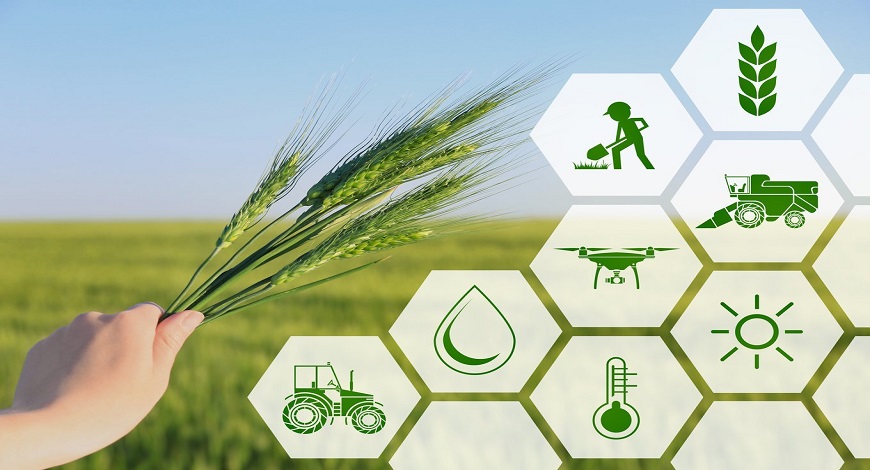
How will conservation of traditional crops and varieties help fight climate change?
Our food and fibre demands are growing rapidly. With an ever-increasing population, the pressure on our agricultural systems to guarantee food and nutritional security has never been more paramount. As if this challenge wasn’t formidable enough, the looming shadow of climate change further complicates matters.
Climate change with rising greenhouse gas emissions and temperature is threatening global food and nutritional security. According to the statistics, by 2100, the average global temperature will ascend by two degrees, resulting in massive economic setbacks worldwide. The rapidly rising CO2 levels boost plant growth and biomass through enhanced photosynthesis. However, the rising temperatures counteract these benefits. Higher temperature accelerates crop respiration evapotranspiration, increases pest attacks, changes weed patterns, and shorten crop cycles. Additionally, climate change disrupts soil microbial communities and their functions.
Conservation Agriculture: A Beacon of Hope for Sustainable Farming
Amid global concerns about soil degradation, conservation agriculture emerges as a beacon of hope. Years of conventional tillage have taken a toll on our soil, but there’s a silver lining – the potential of conservation agriculture to remedy the damage. It’s not just about preventing further harm; this approach brings forth the promise of reversing the degradation.
At the heart of conservation agriculture are three vital principles:
Minimum Soil Disturbance: Unlike traditional methods that agitate the soil, conservation agriculture aims to keep it undisturbed. This ensures the earth’s natural structure is maintained, promoting healthier crop growth.
Crop Rotation: Sequentially introducing different crops enhances soil nutrients and breaks the cycle of pests and diseases. This diversity boosts soil health and ensures a sustainable yield over time.
Maintaining Soil Cover using cover crops: Keeping the soil covered as much as possible ensures it retains moisture, minimizes erosion, and holds organic matter.
Benefits of conservation agriculture
Adopting these practices can lead to reduced greenhouse gas emissions, decreased need for fertilizers, and a boost in carbon storage within the soil.
The way we have been traditionally increasing agricultural production can lead to environmental loss over time, nearly 80% of this would be due to improper nutrient use and distribution. This shows how vital it is to manage nutrients right. One of the things we can do to help the environment is to increase the amount of organic carbon in the soil.
Methods like no-till farming, planting cover crops, using manure, managing nutrients, practicing agroforestry, and restoring soil can achieve this. Doing this could reduce fossil fuel emissions by 5-15% worldwide. Taking the example of rice, changes in the cultivation methods can have huge impact on greenhouse gas emissions and productivity. Planting rice directly in the field without transplanting produces fewer greenhouse gases than usual. Compared to transplanted rice, dry direct-seeded rice and wet direct-seeded rice reduce the potential for global warming by 76.2% and 60.4%, respectively. Furthermore, soaked direct-seeded rice produces almost 11% more yield than transplanted rice.
There’s also a type of rice called aerobic rice that’s great for tackling future climate issues. It uses much less water – 73% less while preparing the farm bed and 56% less during the rice’s growth. Growing this rice using unique irrigation methods can be a sustainable way to produce rice in the future.
Drip irrigation
Drip irrigation is a method that’s being pushed more now to address the problem of overusing groundwater and the challenges caused by intermittent or limited rainfall. This method is suitable for adapting to climate change and reducing groundwater use for watering crops.
In short, the best ways to address climate challenges in farming are to give plants the nutrients or water they need while maintaining soil health and retaining moisture.
While the specifics of future climate changes remain a topic of ongoing research and discussion, there’s a growing consensus: climate change has the potential to impact agricultural productivity in the years ahead negatively. The intricate ballet of temperature, precipitation, and greenhouse gases doesn’t just affect our weather forecasts; it influences everything from pest populations to soil health, from availability of water for irrigation to the physiological and metabolic workings of the plants we rely on.
Smart Practices, Big Changes
In the face of these challenges, strategies to ensure our agricultural systems can adapt and endure have been formulated.
Water-Smart Practices: By implementing techniques like laser land levelling, rainwater harvesting, micro-irrigation, crop diversification, raised-bed planting, and direct-seeded rice, we can optimize water usage, ensuring that every drop counts. Developing and deploying stress-tolerant crop varieties can ensure that our plants are ready to face the unpredictable whims of the weather.
Nutrient-Smart Practices: Precision nutrient application, leaf colour charts, and effective crop residue management allow our crops to derive the most nutritional value from the soil, boosting their health and resilience.
Carbon-Smart Activities: Embracing practices like zero tillage, integrating legumes into crop cycles, and managing crop residues can significantly reduce a farm’s carbon footprint.
Knowledge-Smart Activities: Education and awareness remain one of the most powerful tools at our disposal. Investing in agricultural extensions and capacity-building initiatives empowers farmers with the knowledge they need to adapt and overcome the farming challenges.
By adopting these technologies, we are not just responding to the challenges of climate change – we are actively countering them. These practices diminish the negative impacts of climate change on our crops and adapt them to our changing environment.
Climate change will cost us a lot, individually and in society. We can lessen these effects with actions designed to counter specific issues in appropriate regions and conditions. These actions can help farmers earn more without harming the environment. The unpredictability of climate change makes preparing for it tricky. So, we need to come up with solutions that can handle different weather patterns and involve experts from various fields. This includes developing crops that can handle these changes, managing farms better, and dealing with pests. It’s also essential to teach farmers about these new methods and adequately train them for on-the-ground use.

